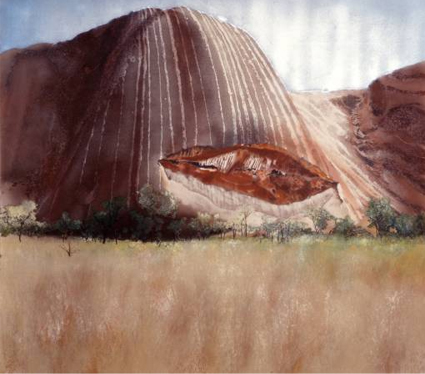Michael Andrews paints slowly, exhibits infrequently and keeps such a low profile that it was once written of him that ''he is in danger of being taken for a rumour rather than a person.'' Conclusive proof of his existence comes in the form of ''Michael Andrews: The Ayers Rock Series and Other Landscape Paintings'' at the Whitechapel Gallery. This exhibition confirms the fabled slowness of Andrews' methods - the nine Australian paintings shown took him six years to complete - and it also confirms him as one of the more intriguing painters at work in Britain today.
In 1873, William Christie Gosse became the first white man to climb Ayers Rock. Climbing it, he thought, gave him the right to rename it, so the Aborigines' magic mountain became Ayers Rock, after Henry Ayers, Premier of South Australia. Michael Andrews visited it 110 years later. Not the sort of man to rush into things, he had been thinking about going there ever since seeing photographs of the place in a Sunday magazine in 1968. Andrews stayed at the Uluru Motel for 10 days in October 1983, making trips to the Rock and the Katatjuta, a group of smaller mounds 20 miles to the West. He took a large number of photographs, made studies in pencil and watercolour, and collected clumps of grass and bags of soil. He spent the rest of the decade back in England working all this raw material up into the paintings now at the Whitechapel.
This seems an odd and anachronistic project for a modern artist to have undertaken. Andrews has lived and worked in suburban Norwich for much of his life. A quiet and (by reputation anyway) private man, he does not sound the type to embark on the sort of heroic transglobal quest for subject...


